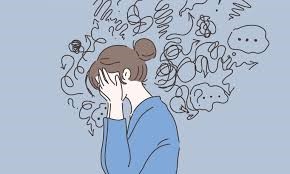
What is perimenopause?
Perimenopause is the time in a woman’s life around menopause. It begins with the onset of irregular menstrual cycles and ends one year after menopause. The average age for menopause is 51 years old and perimenopause typically lasts 4 to 8 years.
What is perimenopausal mood dysregulation?
Perimenopausal mood dysregulation is depression or anxiety that occurs during perimenopause. While it is normal to experience mood swings and difficulty sleeping during perimenopause, for some women this can become severe and lead to episodes of clinical depression and/or anxiety.
Symptoms of depression include:
- poor sleep or appetite
- loss of interest or concentration
- negative thoughts
- excessive self blame
- suicidal feelings
Symptoms of anxiety include:
- tension
- excessive worry
- panic attacks
- breathlessness
- heart palpitations
What causes perimenopausal mood dysregulation?
Perimenopause is accompanied by extreme fluctuations in hormone levels, which can result in mood changes. As a women progresses through perimenopause, estrogen levels decrease. Estrogen helps to increase chemicals in the brain that are beneficial to mood. Therefore, it appears that this decrease in estrogen creates a window of vulnerability to depression and anxiety.
Who is at risk?
Clinical depression or anxiety can occur in any woman. Perimenopausal women are twice as likely to suffer from depression compared to women of the same age who are premenopausal. However, some women are at higher risk. The greatest risk factor is a history of previous depressive episodes or anxiety. Other risk factors include adverse life events or significant hot flashes.
Can anything be done?
There are treatments that can help including medications and/or psychotherapy.
Speak to your doctor or pharmacist if you have any questions about perimenopausal mood dysregulation.
If you’re interested in donating to the Run for Women supporting women’s mental health click here. 
